- Joined
- Oct 9, 2007
- Messages
- 47,511 (7.48/day)
- Location
- Hyderabad, India
| System Name | RBMK-1000 |
|---|---|
| Processor | AMD Ryzen 7 5700G |
| Motherboard | ASUS ROG Strix B450-E Gaming |
| Cooling | DeepCool Gammax L240 V2 |
| Memory | 2x 8GB G.Skill Sniper X |
| Video Card(s) | Palit GeForce RTX 2080 SUPER GameRock |
| Storage | Western Digital Black NVMe 512GB |
| Display(s) | BenQ 1440p 60 Hz 27-inch |
| Case | Corsair Carbide 100R |
| Audio Device(s) | ASUS SupremeFX S1220A |
| Power Supply | Cooler Master MWE Gold 650W |
| Mouse | ASUS ROG Strix Impact |
| Keyboard | Gamdias Hermes E2 |
| Software | Windows 11 Pro |
Can you believe it's been 10 years since MSI launched its flagship Lighting brand of graphics cards? Turns out we reviewed our first MSI Lightning card more than a decade ago! An MSI Lightning card has always been the indicator that a flagship GPU by NVIDIA or AMD has succeeded in winning the hearts, minds, and wallets of gamers, lest MSI wouldn't bother with one. MSI already released the GeForce RTX 2080 Ti Lighting Z, and we reviewed it. Sources tell us that the MSI could be working on a second Lightning product based on the RTX 2080 Ti, which isn't a variation of the original, such as the RTX 2080 Ti Lighting Z with a water-block bolted on.
Named something along the lines of RTX 2080 Ti Lightning Z 10th Anniversary Special Edition, the card will look significantly different than the RTX 2080 Ti Lightning Z, and will ship with an on-card OLED display that puts out real-time monitoring data of the card's temperatures, clock-speeds, fan-speeds, voltages, memory utilization, or pretty much whatever you program it to. The card's cooler will also feature a more richly detailed RGB LED embellishment all around, and will be designed like a piece of jewelry. MSI may also touch up the card's electricals, BIOS, and overclocking-headroom to rival EVGA RTX 2080 Ti KINGPIN. MSI will unveil this card at the 2019 Computex exhibition.
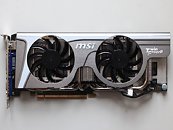
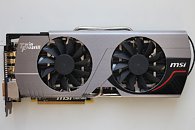
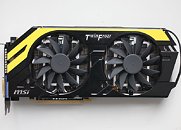
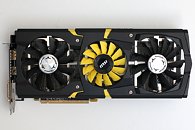
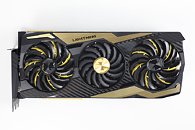
Over the past decade, we didn't even realize that 14 MSI Lighting graphics cards struck our VGA review labs. Pictured above are just 5 of the above from every other year. You can read all of their reviews here. These cards earned their place among the best cards we ever got our hands on, almost never disappointing us with performance, overclocking headroom, fan-noise, power-draw, or just plain premium-ness.
Lightning's journey traces back to the success of MSI's Twin Frozr project way back in 2007. The company was embattled with perception problems, low confidence among DIY gamers and enthusiasts for product quality and aftersales support.
MSI embarked on a long and difficult journey reinventing itself with the "Gaming" brand. The first MSI Gaming products were, unsurprisingly, motherboards and graphics cards. The Twin Frozr cooling solution was among the best custom-design VGA cooling solutions at the time, featuring low load noise, and cooling performance rivaling serious aftermarket VGA air coolers of the time. These, coupled with product design philosophy built entirely around the DIY gamers, MSI's Gaming brand too flight with Lucky the dragon as its mascot.
The crimson red + black color scheme coupled with the MSI dragon emblem soon became a sought after brand among DIY shoppers. Other companies started copying MSI's branding scheme, especially its motherboard differentiation "Gaming 3," "Gaming 5," and "Gaming 7." 10 years down the line, MSI Gaming is among the most respected brands in the DIY crowd, appealing to almost every market-segment, across motherboards, graphics cards, notebooks, and gaming peripherals. Here's to the next 10 years.
Around 2009, MSI found itself with having to need a brand to signify the very best of the best, and differentiate within its lineup. For graphics cards, this meant the highest factory-overclocked speeds out of the box, the strongest VRM and choicest components to enable the highest manual overclocking headroom, and the best possible cooling solution to go, regardless of the fact that leaderboard-crawling professional overclockers swap out the factory cooler with their own extreme cooling. To enthusiasts this meant the best possible platform to work with. To gamers it simply meant a turnkey solution that's the fastest possible card based on a given GPU, so they don't need to key in any manual OC. The result was Lightning.
We're taking a lightning rod with us to Computex.
View at TechPowerUp Main Site
Named something along the lines of RTX 2080 Ti Lightning Z 10th Anniversary Special Edition, the card will look significantly different than the RTX 2080 Ti Lightning Z, and will ship with an on-card OLED display that puts out real-time monitoring data of the card's temperatures, clock-speeds, fan-speeds, voltages, memory utilization, or pretty much whatever you program it to. The card's cooler will also feature a more richly detailed RGB LED embellishment all around, and will be designed like a piece of jewelry. MSI may also touch up the card's electricals, BIOS, and overclocking-headroom to rival EVGA RTX 2080 Ti KINGPIN. MSI will unveil this card at the 2019 Computex exhibition.





Over the past decade, we didn't even realize that 14 MSI Lighting graphics cards struck our VGA review labs. Pictured above are just 5 of the above from every other year. You can read all of their reviews here. These cards earned their place among the best cards we ever got our hands on, almost never disappointing us with performance, overclocking headroom, fan-noise, power-draw, or just plain premium-ness.
Lightning's journey traces back to the success of MSI's Twin Frozr project way back in 2007. The company was embattled with perception problems, low confidence among DIY gamers and enthusiasts for product quality and aftersales support.
MSI embarked on a long and difficult journey reinventing itself with the "Gaming" brand. The first MSI Gaming products were, unsurprisingly, motherboards and graphics cards. The Twin Frozr cooling solution was among the best custom-design VGA cooling solutions at the time, featuring low load noise, and cooling performance rivaling serious aftermarket VGA air coolers of the time. These, coupled with product design philosophy built entirely around the DIY gamers, MSI's Gaming brand too flight with Lucky the dragon as its mascot.
The crimson red + black color scheme coupled with the MSI dragon emblem soon became a sought after brand among DIY shoppers. Other companies started copying MSI's branding scheme, especially its motherboard differentiation "Gaming 3," "Gaming 5," and "Gaming 7." 10 years down the line, MSI Gaming is among the most respected brands in the DIY crowd, appealing to almost every market-segment, across motherboards, graphics cards, notebooks, and gaming peripherals. Here's to the next 10 years.
Around 2009, MSI found itself with having to need a brand to signify the very best of the best, and differentiate within its lineup. For graphics cards, this meant the highest factory-overclocked speeds out of the box, the strongest VRM and choicest components to enable the highest manual overclocking headroom, and the best possible cooling solution to go, regardless of the fact that leaderboard-crawling professional overclockers swap out the factory cooler with their own extreme cooling. To enthusiasts this meant the best possible platform to work with. To gamers it simply meant a turnkey solution that's the fastest possible card based on a given GPU, so they don't need to key in any manual OC. The result was Lightning.
We're taking a lightning rod with us to Computex.
View at TechPowerUp Main Site






